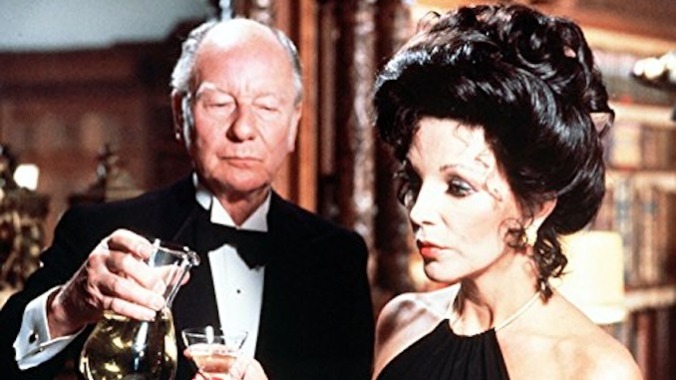TV Rewind: Roald Dahl’s Tales of the Unexpected Is a Macabre Treat
Photo Courtesy of ITV
Editor’s Note: Welcome to our TV Rewind column! The Paste writers are diving into the streaming catalogue to discuss some of our favorite classic series as well as great shows we’re watching for the first time. Come relive your TV past with us, or discover what should be your next binge watch below:

In the mid-twentieth century, anthology television programs were all the rage. Shows like The Twilight Zone and Alfred Hitchcock Presents were consistently at the top of the charts. With a new self-contained episode airing each week, these series cultivated our obsession with bizarre, often supernatural stories that scared us so much that we were unable to look away.
Premiering more than ten years after the conclusion of both of those aforementioned shows, Roald Dahl sought to capitalize on this format in a similar, yet distinctly Dahl way. Made for British rather than American audiences, Tales of the Unexpected began as a vehicle for Dahl to adapt his own short stories for the small screen. By this time, he was already a household name and had risen to prominence for his children’s fiction works. Both James and the Giant Peach and Charlie and the Chocolate Factory had been released to tremendous success, and he was fresh off the impressive performance of 1971’s Willy Wonka and the Chocolate Factory (a film that he hated, despite the attention that it brought both to him and his work). Though he grew to fame for his quirky children’s books, it was in his short stories for adults that he was able to fully let loose, examining dark themes of malice, murder, and revenge.
In 1979, Tales of the Unexpected premiered on British television. With the opening silhouette of the dancing woman and tarot cards, the anthology series invited viewers into the world of Dahl’s imagination, maintaining their wickedly funny and often macabre nature. Like Hitchcock, Dahl’s unmistakable speaking voice demanded viewers’ attention and, each week, he invited them into a warm living room set to introduce the story before handing off the reins to some of the finest working actors of the day. Actors such as Charles Dance, Elaine Stritch, Derek Jacoby, and the late Michael Gambon all made appearances in the series. Like a repertory theater group, sometimes actors would even appear in repeat episodes, playing new roles in different stories.
Episode 4 of Season 1 was an adaptation of Roald Dahl’s Lamb to the Slaughter, a story made famous from its prior adaptation as an episode of Alfred Hitchcock Presents. The story follows a housewife named Mary Maloney who is pregnant and more in love with her husband than ever before. After eagerly awaiting his arrival at the end of a day, he tells her that he is leaving her. Mary finds a frozen leg of lamb in the freezer and, in an emotional fit, hits her husband over the head, killing him instantly. In an attempt to cover up the evidence, she puts the meat in the oven and serves it to the policemen investigating his murder. The dramatic irony and suspense comes from, of course, the searching for the murder weapon when the audience knows that it is right in front of them.
This blend of dark humor and suspense was a characteristic of both Hitchcock and Dahl, and both were clearly drawn to those themes and hallmarks in their respective series, as evident through the adaptation of the exact same story. However, the structure of each presentation differs. Hitchcock’s version is told chronologically, just like the original story. But in the Tales adaptation, the storytelling of the events are altered. Rather than presenting the story linearly, viewers discover the sequence of events as if we are the investigators, slowly learning each element along the way. It keeps its audience at a distance, rather than letting us in on the mystery from the start.
-

-

-

-

-

-

-

-

-

-

-

-

-

-

-

-

-

-

-

-

-

-

-

-

-

-

-

-

-

-

-

-

-

-

-

-

-

-

-

-








































